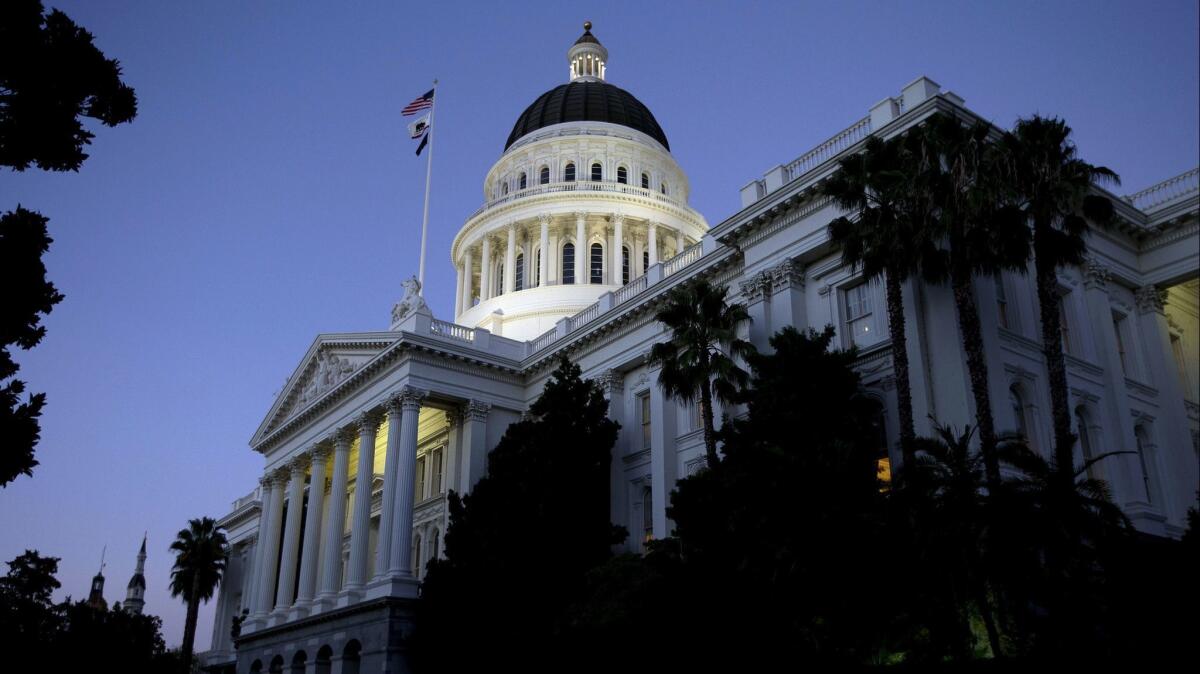Editorial: California’s climate change regulator chooses self-preservation over transparency

When the next governor is sworn in January, he will have the opportunity to shape policy by filling the many state boards and commissions with his appointees — except, apparently, to the powerful agency charged with overseeing California’s ambitious climate change program.
Last week the California Air Resources Board approved a plan to set new, staggered six-year terms for the board’s 14 voting members, 12 of whom are subject to gubernatorial appointment. The terms were required by a bill passed by the Legislature in 2016.
Previously, board members were all at-will appointments who could have been replaced at any time — or as often happened, remain on the board for years and years. Now, members will serve fixed terms and can’t be replaced until their term is up. And under the distinctly backloaded schedule adopted by the board, most of governor’s appointees won’t come up for review until December 2020 and December 2022.
That means Gov. Jerry Brown’s imprint on the board will continue long after he leaves office and the next governor — Democrat Gavin Newsom or Republican John Cox — won’t be able to appoint a majority of the board’s leadership until the end of his first term in office, assuming sitting board members serve out their terms.
Enter the Fray: First takes on the news of the minute from L.A. Times Opinion »
Critics of the plan, including former state Sen. Dean Florez (D-Shafter), argue the arrangement ties the next governor’s hands. There would have been an outcry if Gov. Arnold Schwarzenegger or other former governors had tried to stack the board on their way out of office. Florez is one of two legislative appointees on the board, and both will see their term end in December unless they’re reappointed.
Even worse, though, was the secretive way the Air Resource Board handled the change. Board members had the plan for phasing in the new terms for nearly two weeks, yet the agency refused to make the plan public on its website until a few hours before the vote. That left little opportunity for advocacy groups to weigh in.
Yet one of the reasons lawmakers overhauled the board as part of Assembly Bill 197 in 2016 was to give lawmakers and the public more say over this powerful panel, which sets environmental policies that often become the template for the nation. The measure allowed the governor to continue filling most of the seats on the board, but imposed six-year terms to give the Legislature some oversight when seats came up for review and confirmation.
Board members and staff said the decision on how to phase in the terms was sensitive because the members were being asked to vote on their own seats. Yet that is exactly why the board should have acted with transparency and openness to public input. It did not.
Follow the Opinion section on Twitter @latimesopinion and Facebook
More to Read
A cure for the common opinion
Get thought-provoking perspectives with our weekly newsletter.
You may occasionally receive promotional content from the Los Angeles Times.






